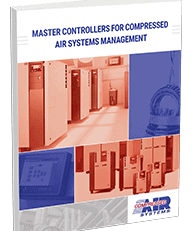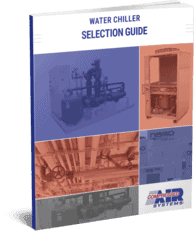How to Reduce Pressure Drop in Your Industrial Compressed Air System
Compressed air systems can develop instances of pressure drop throughout their lifespans, disrupting productivity and leading to inconsistent performance. However, with the right maintenance schedule, parts, and monitoring processes, businesses can minimize the risk of system pressure drop and reduce unscheduled downtime and performance inconsistencies. Learn more about the common causes of pressure drop, how your team or repair technicians can reduce pressure drop, and the benefits of a proactive approach.
What Causes Pressure Drop?
Maintaining a stable pressure level in a compressed air system requires an unobstructed closed loop or connective hose through which pressurized air can travel at a steady rate. Any changes to this environment, such as loose parts, obstructions within the system, and rough internal surfaces, can disrupt the flow of air. Disruptions to steady air compressor pressure come from two major categories:
- Problems with air quality components which include air/lubricant separators, moisture separators, aftercooler components, filters, and dryers.
- Problems with the distribution components, such as the tubing, couplings, hoses, pipes, or regulators.
A pressure drop may register when the compressor delivers insufficient air because of blockage, leaks, or other interruptions. This lowers the pressure within the system, and the compressed air regulation systems respond accordingly. The pressure changes can also result in a lot of wasted energy; in fact, this energy waste increases exponentially as the pressure conditions exceed the recommended pressure levels. If technicians notice restricted air flow within the system or changes in pressure levels that the system must accommodate, it’s time for an inspection or maintenance.
How to Reduce Pressure Drop
While it’s impossible to eliminate pressure drop within an industrial compressed air system entirely, it is possible to significantly reduce the risk and severity of any pressure drops. Frequent inspections, ongoing monitoring, and preventative maintenance can help your facility catch problems early on and prevent them from growing too large. Follow these steps to reduce pressure drop:
1. Inline Filtration
An inline air compressor filter is a device that is installed in the air line between the compressor and the point of use. It is designed to remove contaminants, such as dirt, rust, and moisture, from the compressed air before it is used. This helps to protect the equipment and tools that use the compressed air, and can also help to improve the quality of the finished product. Inline air compressor filters typically use a filter element made of paper, metal mesh, or synthetic media to remove the contaminants. They are also made in different size and flow rate, depending on the compressor and the application.
An inline air compressor filter can reduce pressure drop by using a filter element with a high dirt-holding capacity, a large filter surface area, and a low resistance to airflow. A high dirt-holding capacity means that the filter element can trap a large amount of contaminants before it becomes clogged, reducing the need for frequent filter replacement. A large filter surface area allows for more contaminants to be trapped, while also allowing for a higher airflow rate. A low resistance to airflow means that the filter element does not impede the flow of air too much, reducing the pressure drop across the filter. Changing the filter elements on a frequent basis will help keep the pressure drop low.
2. Inspect the Tubing
Tubing is a common source of problems that cause pressure drop. Loose fittings at the ends of the hoses, harsh bends in the hose, and even developing wear or holes can lead to pressure drop. The internal surface of the hose, especially if it’s rough or abraded, can interfere with pressure. Regularly check the tubing to ensure it’s airtight throughout its length and at any fittings. Look for cracks, detectable airflow, and rust formation (which can indicate developing damage and vulnerability).
3. Check for Any Worn Hoses
Examine hoses for leaks, especially developing leaks that may escape casual notice. Also, ensure hoses are arranged with as little external stress as possible.
4. Consider the System Connections
Connectors, valves, and other components should be tightly fit into place and in good condition without rust or cracks. Also, facilities with overly complex systems that have multiple connectors will benefit from a simplified system with fewer failure points.
5. Check the Regulators
The pressure regulators may be faulty and cause pressure drops without any damage to the actual system. Prevent air compressor regulator pressure drop by resetting the regulators and ensuring they’re taking accurate readings.
6. Check the Lubricators
It may be time to replace lubricators within the compressed air system to maintain the right flow rate.
The Benefits of Reducing Pressure Drop
Pressure drop poses a real risk of inhibiting high-quality performance and wasting a lot of energy. Consider these benefits of addressing and reducing pressure drop:
Improve System Performance
Boost your pneumatic system’s performance by stopping leaks and pressure drop. Your employees can use the compressed air system more efficiently, with fewer delays and errors. Completely addressing pressure drop issues can also reduce unscheduled downtime and costly parts replacement.
Reduce Maintenance and Unscheduled Downtime
Unplanned maintenance and repairs are expensive. Not only does your facility have to pay emergency rates, but you lose production hours. This can put you behind schedule or force you to pay SLA fees. But proactive monitoring and maintenance ensure you catch problems in a timely manner. The problems are smaller, less expensive to repair, and faster to resolve. Investing in newer or more resilient equipment can reduce downtime even more.
Lower the Operating Costs
Pressure drops, as well as the potential gaps and leaks causing the pressure drop, leads to higher operating costs and wasted energy. Addressing the problem reduces operating costs on a day-to-day basis. For every 2 PSIG pressure drop equals one percent less energy. Lowering your plant pressure 10 PSIG gives you a five percent energy savings.
Reduce Facility Emissions
Decreasing energy usage also has the broader effects of reducing your facility’s carbon footprint and energy waste. You will reduce your facility’s overall generation of greenhouse gases.
Start Reducing Pressure Drop With Support From Compressed Air Systems
Pressure drop is expensive, wasteful, and potentially damaging to your production levels. But resolving pressure drop with maintenance and monitoring is simple, cost-effective, and better for your company’s ESG goals. Turn to Compressed Air Systems for support in repairing, maintaining, and improving your compressed air systems. Contact us today for more information.









